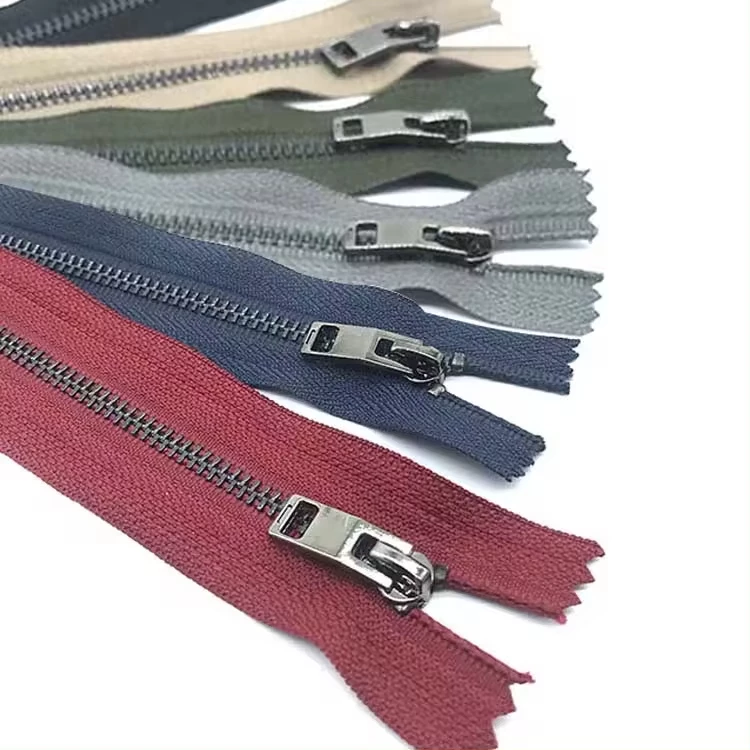
 Apr 18,2024
Apr 18,2024
 BSL
BSL
a. Polyester webbing dyeing uses dispersed dyes that come into direct contact with adhesives and oils in synthetic leather and PVC tape to cause dye migration.
b. The polyester webbing has been dyed with an anti-migration formula. However, in special circumstances, for example, dark zippers are prone to dye migration when used on light-colored fabrics. Please inform us in advance when placing orders for special treatment.
c. Light-colored clothing needs to use copy paper to separate the zipper from the tape to avoid teeth marks caused by long-term contact (due to temperature, humidity, pressure).

a. When metal zippers made of copper alloy (white copper, red copper, brass) are used on metal products or wool products, some of the teeth of the zipper will turn black due to metal oxidation. This is because when the leather-cooking agent used in leather manufacturing and the processing bleach used in woolen products remain on the product during processing, the gases from the product will cause discoloration of the metal zipper.
b. The rubber band itself contains sulfide. When the rubber band is used to bind a metal zipper, the metal chain teeth will be vulcanized (blackened).
c. Although the zipper puller has been anti-rust treated in advance, since oxidation is a property of metal, to reduce discoloration and surface scratches, please wrap the zipper puller with copy paper.
a. When doing laundry, be sure to close the zipper and secure the slider. If the zipper is not closed, the top stop will scratch the fabric and the belt will stretch.
b. Detergents with strong decontamination properties and chlorine-containing bleach will dissolve paraffin and oily film on the surface of the zipper, so be careful when using them. If the zipper becomes difficult to pull after washing, you can apply paraffin wax and slide the slider up and down two or three times, which will make it easier to use.
c. The spray-painted slider must be wrapped with a cloth before washing to prevent the paint from peeling off.

a. Clothes are not the only ones that need to change the iron temperature depending on the material. Zippers also need to be ironed at the right temperature. Only with the right material and the right temperature can the zipper be strong and beautiful. In addition, when ironing, the zipper of any material must be ironed. The teeth must be pulled up, the pull tab of the slider must be flattened and fixed in the correct position, and a pad must be placed before ironing.
b. When ironing the paint slider, be sure not to be burned to avoid the paint falling off.
a. When opening and closing the zipper, sometimes the zipper may not move due to the cloth being caught in the slider. If you forcefully pull the zipper at this time, it will only make the cloth stuck tighter. Therefore, try to pull the cloth stuck in the slider out as much as possible and then pull the slider back to its original position. If it is completely stuck, don't go too far. Use force and just pull up slowly. In addition, when sewing the zipper, you must also pay attention to the smoothness of the sewing.
b. When putting on or taking off clothes, please make sure the zipper is fully open before putting on or taking off clothes. It is best to fasten the button or trouser hook first and then zip the zipper more smoothly. If the slider stops in the middle of the sprocket teeth, it will be easier. This causes the zipper to become blocked. Pay more attention to boots, gloves, and clothing items with zippers to reduce trouble.
